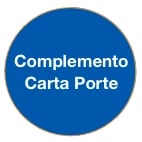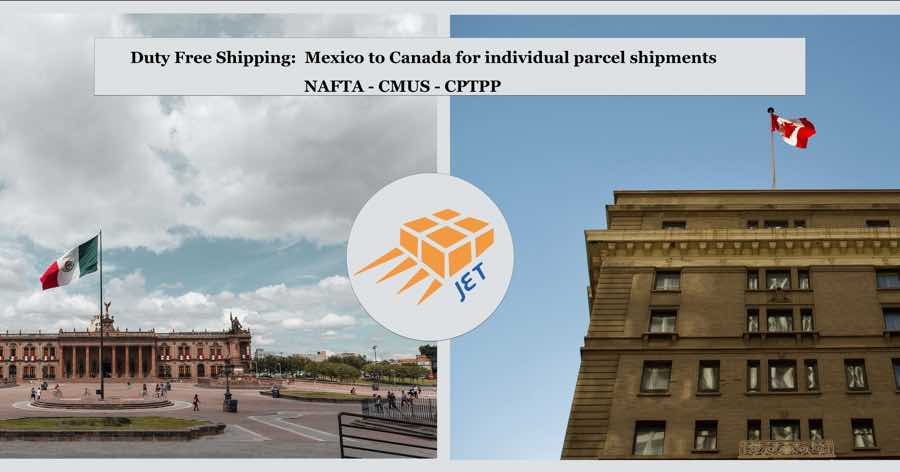
Shipping Canada from Mexico:T-MEC CUSMA and CPTPP
Mexican companies are increasingly looking "more north" to Canada with a huge opportunity created by the potential of duty free import. Even with the uncertainty of NAFTA/ CUSMA, Mexican shippers can benefit preferential treatment thanks to the newer CPTPP.
The Comprehensive and Progressive Agreement for Trans-Pacific Partnership presents CPTPP and the T-MEC CUSMA presents 2 unique free trade options for goods shipped Mexico from Canada.
Via Canadian "reshoring initiatives," companies are increasingly looking to Mexico for production in Mexico. Production in Mexico benefits from low wages and duty free free import contribute to lower total cost of ownership (TCO). Jet Worldwide assists Canadian companies ship from Mexican suppliers to Canada via economy express shipping options.
Canadian duty free import is possible via either T-MEC CUSMA or CPTPP for Mexican origin goods.

Best Shipping options between Canada and Mexico
There are several shipping options available for sending goods between Canada and Mexico. The best option for you will depend on your specific needs and preferences, such as the type and size of the goods you are shipping, the speed of delivery you require, and your budget. Here are some common shipping options that you might consider:
- Air freight: This is the fastest shipping option with door to door integrated solutions.
- Road freight: Full truck load (FTL) and less than container load (LTL).
- Commercial carriers such as FedEx, DHL, UPS and their partners.
- Postal services: Canada Post is generally the best option for individuals shipping small shipments and personal items.
CUSMA/ T-MEC: Shipping Mexico to Canada duty free under $150 CAD
As part of the USMCA (the "new NAFTA), Canada has raised their low value duty threshold ( de minimis threshold) to $150 CAD (around $110 USD). Local sales taxes will still apply (but often times, businesses can claim this charge back). This higher duty free threshold helps businesses and e-commerce merchants in Mexico ship to Canadian customers.
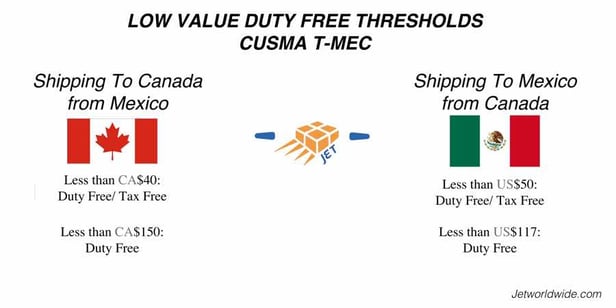
Read more: Understanding duty and how it is calculated
Shipping between Mexico from Canada via Jet Worldwide
Jet Worldwide is a trusted brand providing international shipping solutions for over 40 years.- Jet Worldwide provides options for shipping between Canada and Mexico for parcels, pallets and online orders.
- Benefit from world class logistics support.
Benefit form having a certificate of origin to Canada
The country of origin used by Canadian customs to determine if preferential duty free import can be applied. The country of origin is also a data point used to support regulatory actions such as quarantine, import quotas, to ensure that the goods being imported comply with relevant regulations.
Note for certifications of origin to Mexico: Mexico only accepts the ‘Importer’ as the Certifier.
Read more: Understanding a certificate of origin.
Simplified Origin Statement for Shipping Canada from Mexico
The value for duty amount for all of Canada's free trade agreements (including CPTPP and T-MEC CUSMA) for which the proof of origin / certificate of origin is waived was changed to $3,300 CAD in July 2020. This change was made to harmonize the regulations of NAFTA/ CUSMA with Canada's other free trade agreements.
Understanding the difference: Country from where goods were shipped versus country of origin
For imports not exceeding $3,300 to Canada, the requirement for proof of origin is waived. The requirement on the importer to maintain records (for example, commercial invoice and B3) applies even if the CBSA does not require a certification of origin or if a requirement for a certification of origin has been waived.
Disclaimer: The information in this blog is for general information only. Producers, shippers, exporters, importers should confirm their processes with their customs brokers, carriers and regulating authorities.
T-MEC CUSMA for direct order parcel shipments
While the North American Free Trade Agreement is primarily written to accommodate major commodity trading - such as auto parts, energy, and agriculture - it now benefits for smaller direct online orders.
At Jet Worldwide, we encourage our customers to consider taking advantage of the preferential duty free treatment when goods qualify as Mexican origin.
Good shipped to Canada that the qualify of Mexican origin that are valued under CA $3,300 can be cleared duty free with a simpler certification statement.
Here is a sample statement that can be included on the commercial invoice requesting preferential tariff duty free treatment:
"I hereby certify that the good covered by this shipment qualifies as an originating good for purposes of preferential tariff treatment under the CUSMA/T-MEC."
Although the rules of origin can be complex, parcels shipped from Mexico often contain orders for goods that easily qualify as being Mexican origin. We advise Canadian companies to work with Canada customs CBSA to get a definitive determination prior to shipping as information presented in the blog is for general information only.
CUSMA T-MEC Shipping to Canada from Mexico
The key provisions of CUSMA T-MEC (i.e. new NAFTA) include:
- Duty free and tax free entry for most Mexican parcels valued under CA$40
- Duty free entry for most Mexican parcels valued under CA$150
- Simplified "Certification of Origin" for shipments valued under CA$3,300
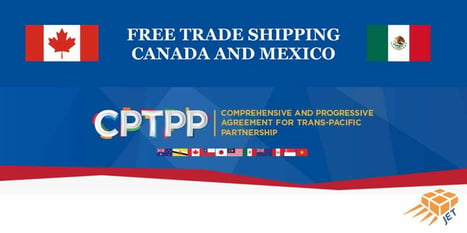
Shipping Mexico duty free to Canada via CPTPP
The benefits CPTPP are starting to materialize and the benefits are increasingly being realized by Mexican and Canadian companies. Some experts feel that CPTPP provides easier administration and the certificate of origin rules are less burdensome than CUSMA.
The rules of origin in the CPTPP generally say your product must have between 30% and 40% regional value content, which is slightly more lenient than CUSMA.
Only one method of preferential duty treatment (CPTPP vs CUSMA T-Mec) can be used at the time of importing to Canada or Mexico. This must clearly noted on the supporting paperwork.
CPTPP Proof of origin statement:
The required proof of origin is referred to as a certification of origin and consists of a set of data elements contained in Annex3-B of Chapter3, that may be placed on any document. Additional information concerning the CPTPP certification of origin is contained in Article3.20 ofChapter3.
Proof of origin for Commercial Mexican goods: Low Value Exeption
Commercial goods. Products valued less than US$1000 (equivalent in local currency)do not require a certification of origin to Mexico in order to claim CPTPP preferential tariff treatment. For qualifying Mexican origin goods to Canada, the proof of origin / certificate of origin is waived.
The requirement on the importer to maintain records (for example, commercial invoice and B3) applies even if the CBSA does not require a certification of origin or if a requirement for a certification of origin has been waived.
Instead, only a signed statement completed by the importer, exporter or producer certifying that the goods originated from a CPTPP country, is required on the commercial invoice or any other supporting document.
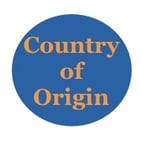 CPTPP Proof of Origin for qualifying Mexican goods to Canada
CPTPP Proof of Origin for qualifying Mexican goods to Canada
In order to claim the preferential tariff treatment, a set a data elements referred to as a ‘certification origin’ must be provided by the exporter, producer or importer of the goods by adding the information to any document (e.g., Commercial Invoice) accompanying the shipment or if preferred, by providing it on a separate document. The data elements do not have to follow a prescribed format but must contain the minimum data elements listed below. In addition, the imported goods must originate and be exported from a CPTPP ratified country.
- Indicate the Certifier (Importer, Exporter or Producer)
- Name, Address and Contact Information of the Certifier
- Name, Address and Contact Information of the Exporter (if different from the certifier)
- Name, Address and Contact Information of the Producer (if different from the certifier, or exporter)
- Name, Address and Contact Information of the Importer
- Description and HS Tariff Classification for the Goods
- Origin Criterion for the Goods
- Blanket Period
- Authorized Signature and Date
Note: The certification of origin must be signed and dated by the Certifier and accompanied by the following statement:
“I certify that the goods described in this document qualify as originating and the information contained in this document is true and accurate. I assume responsibility for proving such representations and agree to maintain and present upon request or to make available during a verification visit, documentation necessary to support this certification”
 Understanding shipping from Mexico vs Mexican origin
Understanding shipping from Mexico vs Mexican origin
DUTY FREE ≠ TAX FREE:
It is important to understand that free trade agreements CPTPP/CUSMA/T-MEC apply to duty assessments but not taxes. All goods - even those cleared duty free - are subject to Mexican taxes (including 16% Value Added Tax)
CPTPP or CUSMA T-MEC: Either/ or but not both
Importers can choose between CPTPP or CUSMA /T-Mec but the option must be chosen at the time of import. Some experts prefer CPTPP country of origin provisions but both free trade agreements offer advantages. CUSMA T-Mec higher duty free low value thresholds benefit all shipments (see graphic below).
CUSMA vs. CPTPP rules of origin shipping between Mexico and Canada
Mexican and Canadian exporters and importers can choose between the CUSMA / T-MEC or CPTPP free trade agreements. .Both the CPTPP and the USMCA include rules of origin that determine which goods qualify for preferential treatment. They generally specify the percentage of a product's content that must originate from the participating countries in order to qualify for preferential treatment.
- Under the CPTPP, he specific percentage requirements vary depending on the type of product and may be based on the value of the product's materials, the cost of its production, or other factors. For example, for most automotive products, at least 45% of the product's content must originate from the CPTPP countries in order to qualify for preferential treatment.
- Under the USMCA, rules of origin are based on the percentage of a product's content that must originate from the US, Canada or Mexico in order to qualify for preferential treatment. The specific percentage requirements vary depending on the type of product and may be based on the value of the product's materials, the cost of its production, or other factors. For example, for most automotive products, at least 75% of the product's content must originate from the US, Canada or Mexico to qualify.
It's important to note that the rules of origin under both the CPTPP and the USMCA are complex and may change over time. It is important to verify compliance with industry experts and relevant government agencies prior to shipping.
WHAT IS A CERTIFICATE OF ORIGIN AND WHY IT IS NEEDED?
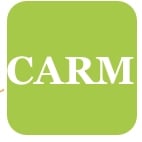
If you are importing to Canada, it is important to become familiar with Canadian Customs online portal which is designed to streamline processes. Read more about CBSA Assessment and Revenue Management (CARM)
Complemento Carta Porte
The Mexican Tax Authority (SAT), in an effort to increase compliance and cargo security, requires any entities sending goods through Mexico to modify their electronic invoices — known as CFDI in Spanish — with the Carta Porte supplement. All freight of any size traveling by road, rail, air or sea through Mexico and all types of commodities will be required to have the supplement.
Information required by Complemento Carta Porte can include:
- Goods that will be moved throughout the Mexico
- Information about the shipper, consignee and receiver locations
- Information about the means of transportation (including information about driver in case of road transportation.
Regulated parties affected by the Carta Porte supplement includes the owner of the goods being transferred, intermediaries and agents of transport, and hauling companies. The suppliers of transportation services should issue a CFDI of Revenues with the Carta Porte supplement. Note that this information is based on public information including by the Mexican Tax Authority and subject to change.
Get a quote for shipping between Mexico and Canada.
Jet Worldwide gives access to all companies seeking shipping quotes between Mexico and Canada for parcels pallets, and online orders.





